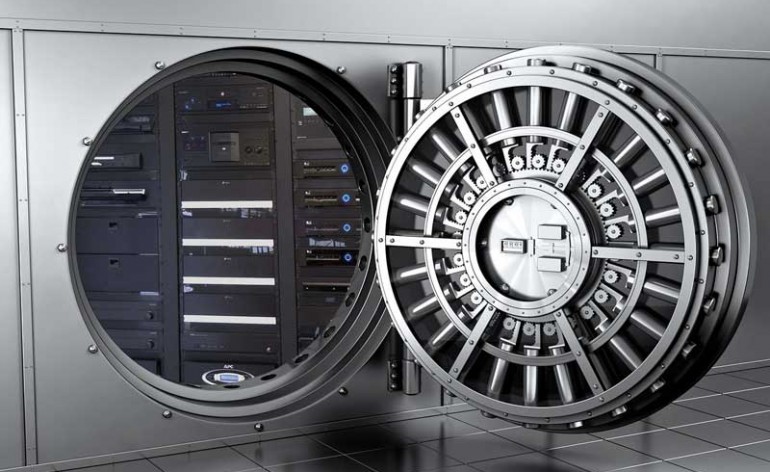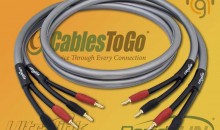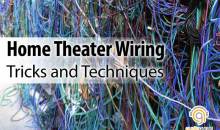Hiding Audio Equipment in a Closet
In some homes, the thought of having all of your equipment out in the open seems like a quick way to destroy the aesthetics of your living space. I’m not talking about overly-restrictive spouses, here, but rather historic homes or places where you want the advantages of an advanced home theater system—you just don’t want it front and center. The chief method of hiding away all of that gear and equipment is through remotely locating it in a closet or similar remote location. Hiding audio equipment is a big deal with custom installers working with older homes.
This isn’t all that hard, but it does raise some potential considerations, including running your wires, dealing with heat dissipation, and, of course, controlling your equipment. I’ll go into a nice overview of all three of those concerns here. The bottom line, however, is that it’s OK to invite a custom installer into your home to take care of this for you. For some, it’s simply never occurred to them as an option. In my opinion, ANYTHING that can land me more gear (even if I have to hide it away) is a good thing!
Running Wires to the Remote Location
It may seem obvious, but the first challenge when remotely hiding audio equipment is running wires to the new location. Gear that is located in the same room as the speakers require less challenging cable runs. Move all of that equipment into a closet or remote location, however, and now you have to not only run surround sound wiring, you also have to deal with your main channels and even your video cabling. That’s a level of complexity that didn’t exist before.
Often, while these may seem like insurmountable challenges that make the thought of adding gear into a remote location untenable, often that’s not the case. Interior walls and access via crawl spaces and attics provide an excellent means for running wire from one location to another (see our article on Running Wires for Surround Sound Speakers for more examples of this).
You’ve just got to plan your route. Careful planning will yield an easier process than you can implement more methodically and efficiently. Just remember: Plan tour install, then install your plan. And if you get bogged down, call a professional—they do this for a living and will likely not be too challenged by any particular hang-up that might send you over the edge.
One additional thing to consider whenever you relocate gear is future expansion and upgrades. Don’t wire the system up just for the gear you have now. Try to think ahead to what might need to be in that rack 5 to 10 years from now. Do that and you’ll ensure you don’t have to virtually start over when it’s time to upgrade.
Heat Dissipation
Another concern when relocating gear into a rack is figuring out how to deal with the heat generated by amplifiers and separates, Blu-ray players, cable/satellite set-top boxes and gaming systems. All of those devices are equipped, one way or another, to dissipate heat from the device into the air. The problem is—when you stack that gear up the room gets rather warm. And if it gets too warm you’ll shorten the life of your equipment, cause it to enter protection or shut-down mode, or in the worst case, cause it to fail entirely.
There are several ways to deal with heat. One is to make sure to properly vent the space where your equipment is stored and allow the are to draw in fresh air (preferably from below) while expelling hot air from above. There are fan systems designed to help you with this. Some are rack-mountable and are designed to draw air through the rack while others are made to sit on top of gear and draw air upwards through the vents. If you are dealing with a simpler installation, it may be possible to simply use the principles of convection, where you draw cooler air in from below and allow a place for the hot air to exit above your gear.
Remotely Controlling Your Equipment
The last consideration for hiding audio equipment in a closet or other location is actually controlling the equipment. If it’s no longer line-of-sight then you need to utilize a remote IR sensor or a more sophisticated RF or IP-based WiFi control system to let your equipment know what to do and when to do it. I actually knew a guy who relocated all of his gear into a closet, including running all of the speaker cables and video cables—only to realize at the end that he had no way to sit on his couch and make everything work!
A great remote control system will truly make or break your home theater. If you’re going through the trouble to move and store your equipment in a remote location, be sure to allocate time and budget to getting a control system that will make it work the way you want. I love some of the new LCD touch screen systems on the market, but even if you have a limited budget, there are products from Universal Remote, C2G, Russound and Logitech Harmony that can get the job done with style.
Summary
Hiding audio equipment in a closet or other remote location may seem daunting, but it’s a really great way to convince your significant other that you can indeed have surround sound in that 1920’s home without ruining the décor or forcing your living room to look out of place. Careful planning and attention to detail will get you very far towards having your cake and eating it too!







I’m thinking of purchasing a “Pianomation” player system for my grand piano. It plays all of the audio that you’d hear on a CD plus all of the piano parts are played on your actual piano. I’d like to know if there’s a way to take the “audio out” from the amplifier that’s under the piano and send it to my surround sound amplifier audio input that’s 15 feet away without using any wires.